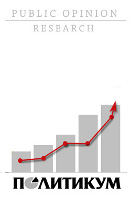| NSPM in English | |||
A New Growth Model |
 |
 |
 |
| петак, 24. јул 2009. | |
|
That model has been based on two key pillars. The main one has been developing service sectors such as communications, trade, financial services and real estate. This made sense at the time, and still does, as the transition to a market economy includes a substantive change in how GDP is generated. Second, the region’s rapid growth grew increasingly dependent on an influx of relatively cheap foreign capital, both greenfield and brownfield investments. Since 2004, we have witnessed close to €900 billion of such capital inflow, nearly half of which (€427 billion) stemmed from the expanding banking sectors of these economies alone. These flows were so substantial that only a year ago some even questioned whether there was a need for international financial institutions such as the International Monetary Fund and the European Bank for Reconstruction and Development anymore. The flood of capital was successful in concealing several critical red flags. Current account deficits were increasing much faster than GDP growth. By the end of 2008, several countries recorded double digit figures (Serbia, Bosnia and Herzegovina, Romania, Latvia and Lithuania), with some even above 20% (Bulgaria and Montenegro). Moreover, it took only a short period of time for cross-border liabilities in most of these countries to surpass the value of total domestic banking activity, thus increasing the level of dependency on foreign funding. Because capital was so readily available to cover the gaps—central bank reserves actually increased during this time—the significance of these negative developments was almost completely ignored. But for those who looked closely, it was clear that many countries were increasing their vulnerability to external financing shocks day by day. Now that just such an external shock has happened, it is time for a re-evaluation of the previous two decades’ growth pattern. For all the trouble it has brought, this crisis is an opportunity to put Central and Eastern Europe on a more sustainable growth path. This will require both a short-term and a long-term approach. Over the short-term, governments need to find ways to cover growing financing gaps. The good news here is that EU members in Central and Eastern Europe have been able to draw substantial support from the EU. Such support has doubled since the beginning of this year, to €50 billion from €25 billon. However, as this program has been designed for “members only,” other countries have no alternative but to be satisfied with the leftovers, measured in hundreds of millions instead of billions of euros. The IMF has shown clear leadership in providing a helping hand to several CEE countries by providing substantial funds, fast and under generous conditions, for immediate fire-fighting purposes. But that money taken today needs to be paid back tomorrow. We can no longer put off reckoning with the deeper causes of our problems. The key issue will be fixing what Hungarian economist Janos Kornai has called the “premature welfare state.” Too many countries have expanded their expenditures, especially on social programs, substantially beyond their ability to pay. This will call for a five-point plan: First, pension reform. The pension system basically suffocates all the economies in Central and Eastern Europe, which are trying to fund payments to a growing number of retirees living longer and longer by using current contribution from a shrinking number of workers. Nominal pensions must be reduced to a long-term sustainable level. Some countries will need to re-examine pension eligibility rules to control the number of recipients. In several countries, including Serbia, fewer than 20% of pension recipients have worked the 35 to 40 years foreseen by the pension law before retiring. Second, political taboos on discussion of the costs of health care and education must be broken. Even though government expenditure on health in Serbia has remained roughly constant as a percent of GDP over the past several years (at around 6%), in an environment of rapid economic growth this means that since 2003, the Ministry of Health budget almost doubled. The majority of the funds were used for the increase of real wages, which grew at 10-15% annually. Similarly with education, total spending remained at a level of around 5% GDP, despite the fact that the average number of students per class has steadily declined. Third, all other public expenditures generally have to be brought back to the level of the “normal welfare state”—the level that would be achieved with more decentralized, market-oriented solutions and aiming at an equilibrium between state and private initiatives. Governments must rethink a range of functions, from road building to infrastructure projects, from social assistance to enterprise subsidies, to keep spending under control and maximize return on taxpayer money. Fourth, the capacity of tax authorities must be substantially boosted and the fight against grey markets should be a key priority. Broadening the tax burden and ensuring efficient collection will make it easier for governments to fund their obligations without imposing higher tax rates on a continuously shrinking number of taxpayers. Last but not least, exchange rate regimes must be revisited, especially in the countries with fixed exchange rates, as there is a growing concern if the current shocks could be amortized by relying solely on fiscal tools. Exchange rates, especially in the case of small and open economies, play a crucial role in achieving medium- and long-term stability. Implementation of these changes, under the impact of the current crisis, will be even more difficult than normal. But reforms cannot wait for better times; they must be done now. As there is definitely no way back, transition economies urgently need to find their path forward. Mr. Jelašić is governor of the National Bank of Serbia. http://online.wsj.com/article/SB10001424052970203946904574299990240864378.html |
Од истог аутора
Остали чланци у рубрици
- Playing With Fire in Ukraine
- Kosovo as a res extra commercium and the alchemy of colonization
- The Balkans XX years after NATO aggression: the case of the Republic of Srpska – past, present and future
- Из архиве - Remarks Before the Foreign Affairs Committee of the European Parliament
- Dysfunction in the Balkans - Can the Post-Yugoslav Settlement Survive?
- Serbia’s latest would-be savior is a modernizer, a strongman - or both
- Why the Ukraine Crisis Is the West’s Fault
- The Ghosts of World War I Circle over Ukraine
- Nato's action plan in Ukraine is right out of Dr Strangelove
- Why Yanukovych Said No to Europe

.jpg)








 Central and Eastern European countries are justifiably proud of the progress they have made in the past 20 years of reform. But their transition from planned to market economies remains incomplete. The recent financial crisis, followed by a world-wide economic slowdown, is exposing all the areas in which these countries still need to improve. The crisis is magnifying mistakes they have made so far, and calls for policy makers to rethink their current economic growth models.
Central and Eastern European countries are justifiably proud of the progress they have made in the past 20 years of reform. But their transition from planned to market economies remains incomplete. The recent financial crisis, followed by a world-wide economic slowdown, is exposing all the areas in which these countries still need to improve. The crisis is magnifying mistakes they have made so far, and calls for policy makers to rethink their current economic growth models.











